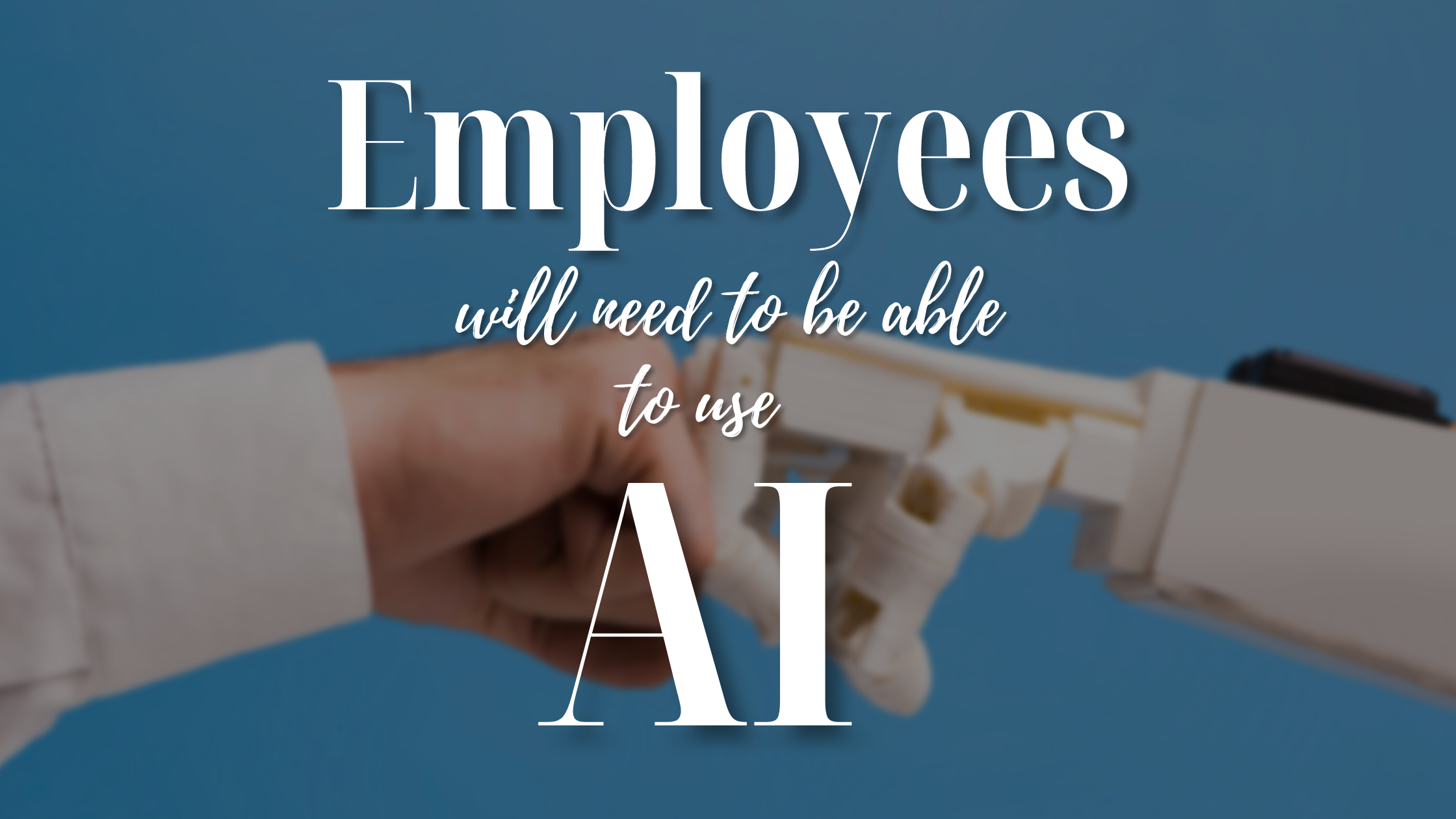Employees Will Need Be Able To Work Alongside AI

Article originally published by HR Brew on August 17, 2023. Written by Adam DeRose.
As corporate America wrangles with integrating AI into operations in every field, worries of job security and being replaced by robots abound. But let’s hope that’s a bit overstated.
Executives estimated that 40% of their workforces will need to reskill as a result of implementing generative AI and automation over the next three years, according to a new IBM study. Most execs said they see jobs as being “augmented, rather than replaced” by generative AI tools.
The IBM report predicted that the newest AI applications will likely lead to the creation of an “augmented workforce,” where humans will partner with machine learning for added productivity. (Thanks, cyborg Cindy!)
“In addition to automating discrete tasks—which is something we’ve been able to do—we can now pull those tasks together and link them, which means there’s going to be a bigger portion of people’s work that’s displaced by automation. That’s true, and in some cases, roles will become obsolete,” said Jill Goldstein, global managing partner for talent transformation at IBM. “That’s at the fringe; I think the reality is the mighty middle.”
Many more employees, she said, will work alongside generative AI tools that will help streamline content creation, summarization, and analysis and insights.
“Many of us are going to have to think about doing our work differently, because we’re going to have this enablement that we haven’t had before,” she said.
Workers across the professional landscape will all feel the effects of generative AI, but lower-level employees are expected to see the biggest shift, according to the study.
That mirrors findings from the National Bureau of Economic Research earlier this year that found generative AI can improve productivity by as much as 35%, but those gains disproportionately affected the performance of low-skill and new employees compared to senior employees or high performers.
Zoom out. The most successful businesses will be those that entirely rethink operations and the way work gets done, the study found. This is different from simply automating systems that already exist, but rather reexamining the entire workflow and operations.
“The idea of incrementally tweaking what you have is only going to get you so far,” Goldstein said. “Organizations have to be bold enough to challenge their orthodoxies in ways that they haven’t…in order to maximize their investment in the technology that we’re talking about.”
HR should rethink and rewrite job descriptions to include how each role will work with the generative AI tools the company is using or plans to use. Strip each role down to the bones and rebuild the job description with generative AI in mind, Goldstein advised.
“HR’s job is to…build, borrow, buy, or bot the talent,” she said. “The first thing they should do is to say, ‘What part of this job can be automated or enabled or augmented?’ And let’s rethink the job description.”